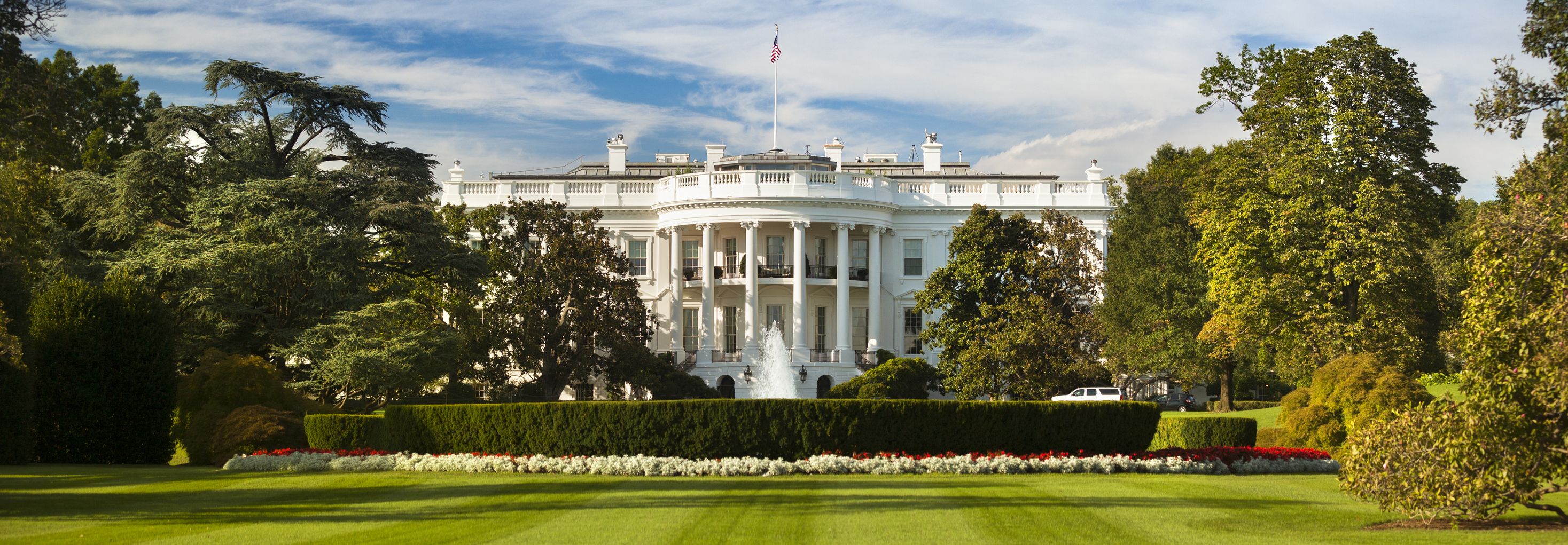No neutral ground: The White House’s hued history of interior design
Most know it as “the most famous address in America,” and not just because of the history-making occupants who have lived there through the years. Even with the likes of Abraham Lincoln, John F. Kennedy and Barack Obama given their due, the sandstone facade and tour-worthy rooms of 1600 Pennsylvania Avenue have served not just as our country’s post of political power since John Adams took residence in 1800, but as a monument to the ultimate embodiment of elegant work-from-home design, from the architecture’s neoclassical roots to the changing interiors reflecting the tastes of each successive age. To delve into each room individually would fill—and has filled—entire books, so for our more condensed purposes, we reached out to Bridget May, historian and instructor of interior design at LSU, for some tidbits about some of the White House’s most emblematic rooms.
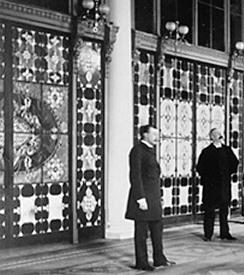
Anyone who has ever toured the White House, for example, will likely remember its series of “colored” rooms, namely the Red Room, Blue Rom, Green Room and Yellow Oval Room, each embodying different purposes through the years, but immediately recognizable by virtue of their full commitment to saturation. The Red Room parlor, to start, looked a bit different in 1882 than it does today, having now lost its Tiffany glass screen and the stars and stripes painted on its ceiling (as well as a caged magpie kept there by Thomas Jefferson), instead embodying the “American Empire” style of design put in place by Jaqueline Kennedy’s extensive refurbishing in the ’60s.
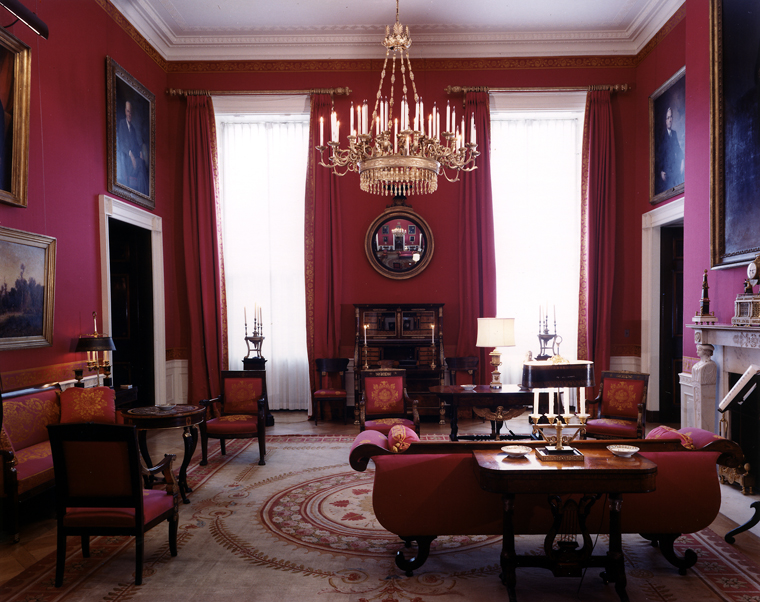
Theodore Roosevelt likewise took charge of many renovations and redecorating at the turn of the 20th century, including the then-French Empire style of the Green Room reception space, later transformed into a more federal style by the aforementioned Jackie O. The Blue Room kept its French Empire flair, and even hosted the wedding of President Grover Cleveland and Frances Folsom in 1886, with the burnished gold of its wallpaper and 19th-century French chandelier contrasting perfectly with the rich navy of the rugs and draperies. The Yellow Oval room, too, has been used for receptions and as a parlor area. And in 1941, its sunny interior would become the unlikely backdrop in which Franklin D. Roosevelt learned of the Japanese attack on Pearl Harbor, surrounded by luxe furniture in the Louis XVI style.
From hosting important guests to serving as waiting rooms for the President, the fact that world-changing business transpires in the same compound where families live and play has always been a hallmark of the residence. But whatever transpired inside, visitors today will likely notice one thing in particular about those rooms: the near-garish intensity of color, from the wall paint to the furnishings.
“Bear in mind that I’m a historian,” says May. “When I look at those rooms, I’m thinking of period-appropriate colors. And although they may appear abnormally bright and strong to us today, it’s important to remember that back then, much of the time these rooms were seen at night, and in candlelight, when the colors would come through much more subtly.”
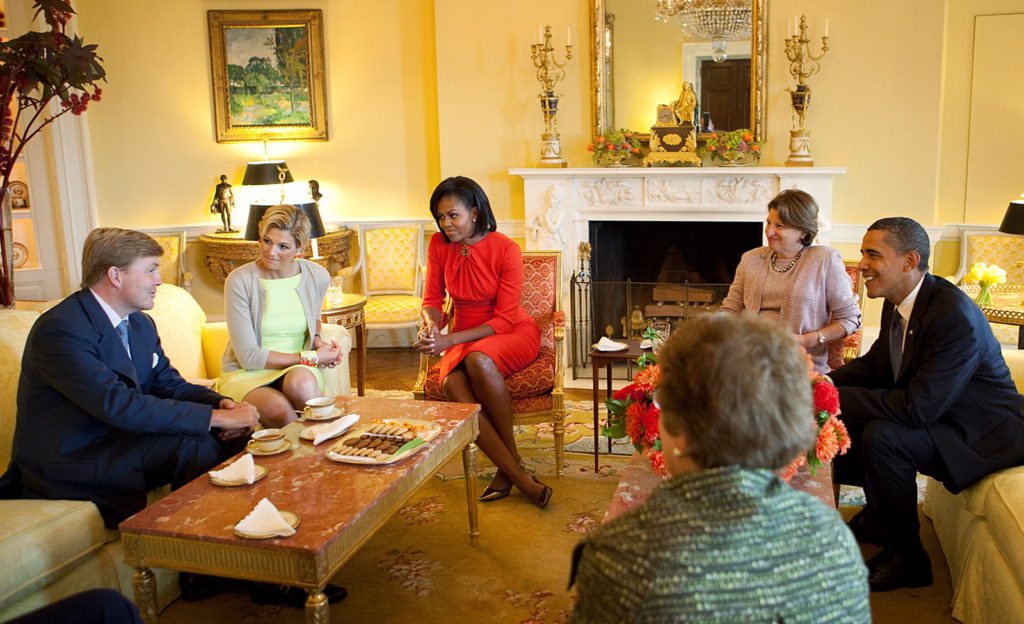
So, although quite tomato-y under the contemporary gaze, the Red Room during its stint as Thomas Jefferson’s waiting room might have appeared more lush and velvet-like amidst the flicker of flames. As much as we in the modern era appreciate a good electric light, much of the renovations through the years—from the Roosevelt Era to the Kennedy era and beyond—have been made, says May, with a reverence for the tastes of the White House’s origins in the 1800s.
“Jackie Kennedy especially tried to take it back to where it was back then, and even much of the Empire-style furniture that had been sold after the James Monroe administration has been replaced with restorations,” says May. “It was probably in 1881 where it went through its most contemporary-minded—for the period, that is—refurbishing, with the Tiffany glass and potted palms. That was definitely not the style of the ‘olden’ days of the presidency. Today, what I see is a mash of furniture styles from different periods, but still a large attempt at keeping with the original style of the house.”
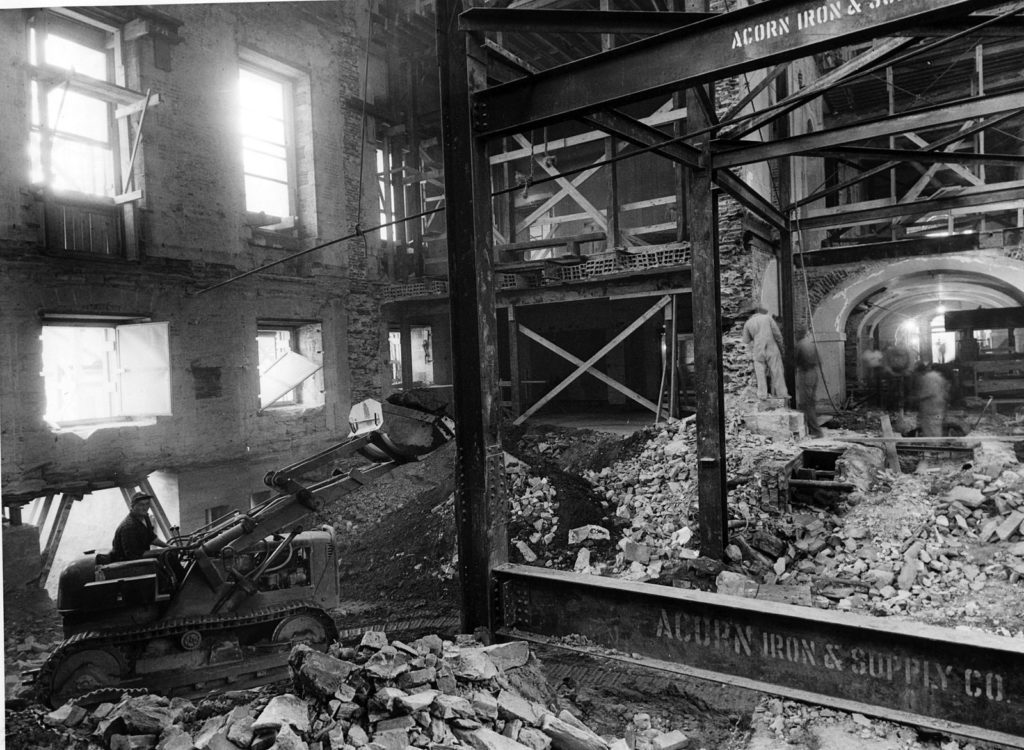
Palladian architecture pulling from the Renaissance, Georgian-era country houses in Dublin, French chateaus admired by Thomas Jefferson—each play a part in the design we see today, in our era where nothing seems to be sleek and shiny and minimalist enough. But let us not forget the largest reconstruction of all, when the White House, whose timber walls (put in place after a fire burned down much of the original structure in 1814) began to deteriorate in the mid 20th century, was completely gutted and rebuilt between 1949 and 1952.
“You can find photos of whole bulldozers inside the White House,” says May. “The amount of work it must have taken to reconstruct it and its original design blow my mind. So really, no matter what we see when we tour it today, we’re always seeing a re-created White House, and I’m sure it will only continue to morph and change as the years go on.”
What do you think of the White House’s bright designs? Let us know in the comments below.




